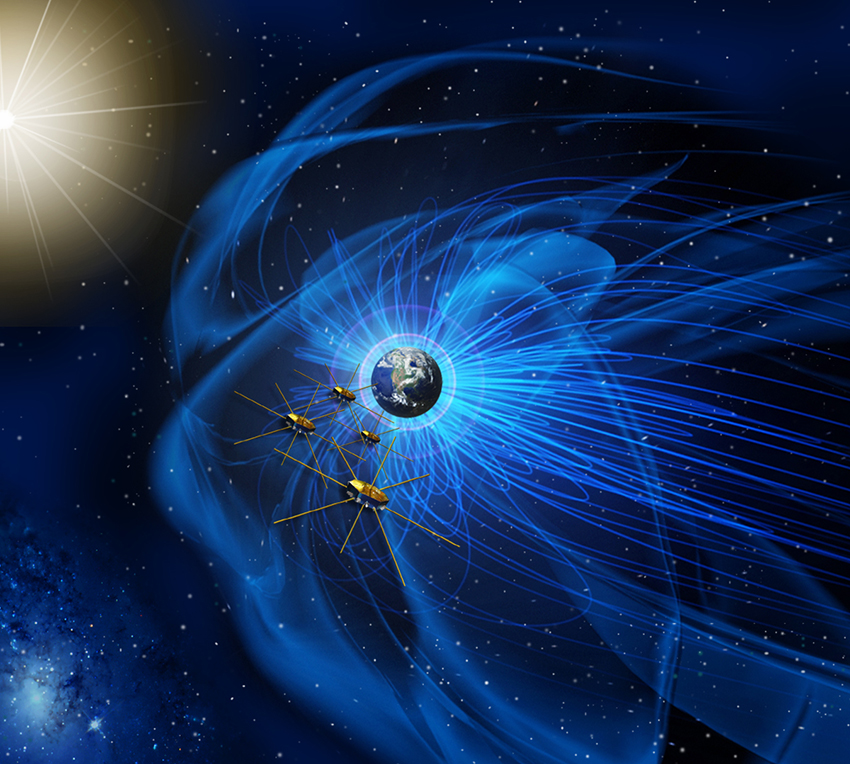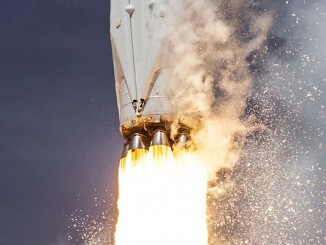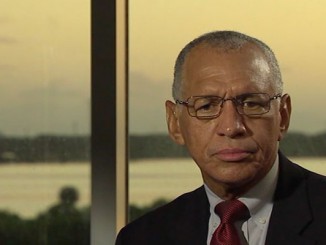CAPE CANAVERAL — A $1.1 billion science investigation involving four formation-flying satellites circling the Earth, each one identical, fitted with 25-instrument sensors and measuring 94 feet tall by 369 feet wide when fully deployed, will share a single Atlas 5 rocket launch Thursday night from Cape Canaveral to probe explosions in the magnetic field with millisecond speed.
Liftoff is targeted for 10:44 p.m. EDT (0244 GMT) at the opening of a 30-minute launch window for the rocket to get airborne from Complex 41.
The project is known as the Magnetospheric Multiscale mission, or MMS, with the spacecraft operating in a tetrahedron formation to fly through explosive connections and disconnections of the magnetic field lines above Earth, events that explosively convert magnetic energy into particle energy.
“There are a lot of models about reconnection and they all make certain assumptions because we don’t really know what’s happening,” said Jim Burch, principal investigator of the MMS instrument suite.
“The measurements we are making are such fine-scale that there won’t have to be another mission after this.”
A veteran of other missions, Burch predicts MMS will be the greatest one yet.
“MMS is the best one and the hardest one because it’ll be a final result on an important phenomena — not just learning more, but solving the problem.”
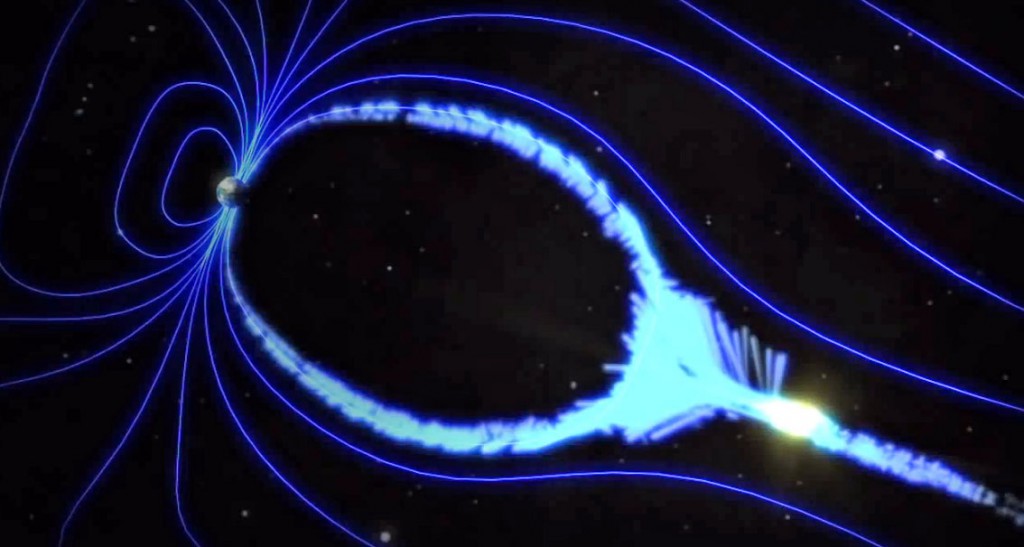
“The reason this is important is these explosions drive a lot of the weather patterns that we see in the magnetosphere, what space scientists call space weather,” said John Dorelli, a space scientist at NASA’s Goddard Space Flight Center, where MMS was built.
“These space weather phenomena can have impacts on our every day lives. It can actually affect communications satellites, the power grid. So we would really like to understand how these magnetic explosions work.”
To perform the sampling, the four identical probes must fly together in a close constellation in Earth orbit.
“The formation flying is just as hard as going to Mars,” says Brent Robertson, MMS deputy project manager at NASA-Goddard.
“We start out at 100 km (62 miles) apart per spacecraft and bring them in to 10 km (6 miles) apart. We have to have very precise maneuvers to do that with a spinning spacecraft. It is quite challenging.”
The four spacecraft, each the size of a baseball diamond with their antennas sprung out, will be maneuvered with an accuracy of 330 feet, said Craig Tooley, the MMS project manager from NASA-Goddard.
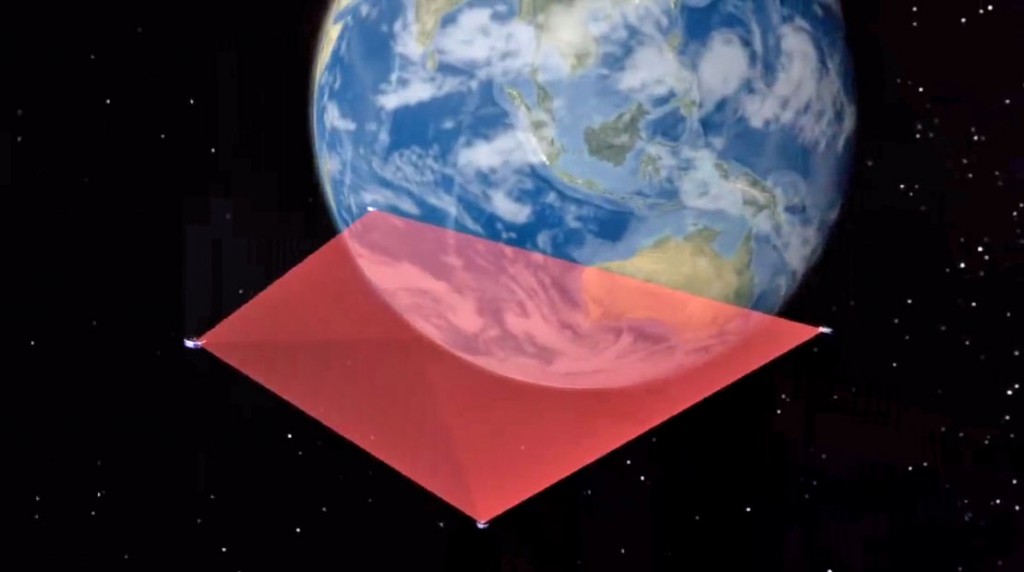
Ejecting one by one from the Atlas 5 rocket into a preliminary orbit, the spacecraft will fire their onboard thrusters to reach operational orbits looping 1,600 miles in altitude at its closest approach to Earth and extending out to 43,500 miles at its farthest. Later in the mission, after 1.5 years, the high point will be boosted to 95,000 miles.
“We fly through the region of interest every day and we want to have a good formation of the four spacecraft,” said Robertson.
The MMS spacecraft will soar through reconnection regions in a fraction of a second, making the key sensors required to take measurements 100 times faster than any previous mission.
“The instruments that are actually going to be measuring the particles in space are collecting them more rapidly at a much higher cadence than they have on previous missions, by about a factor of 100,” said Dorelli.
“Whereas it would take a previous generation particle instrument three or four seconds to build up a whole picture of the sky, it’s going to take MMS about 30 milliseconds. It really is game-changing technology.”
The instruments include those to study the electric and magnetic fields, measure plasmas and probe energetic particles.
“We’ve never — before MMS — had the ability to essentially run the camera fast enough to catch it,” said Tom Moore, MMS senior project scientist.
For launch, each satellite will weigh 3,000 pounds, the mass of a Toyota Prius, and stand about 4 feet tall and 12 feet wide. Once fully deployed in space, the craft will extend wire-like antennas, unfold magnetometer arms and deploy booms, making each satellite about 94 feet tall and 369 feet wide. They were built at NASA’s Goddard Space Flight Center in Greenbelt, Maryland.
“There was a Decadal Survey done and MMS was deemed a high priority to understand the physical process known as magnetic reconnection. This process occurs throughout the universe. It occurs when solar flares erupt from the sun, it occurs in planet formation and it occurs here on Earth in fusion reactors,” Robertson said.
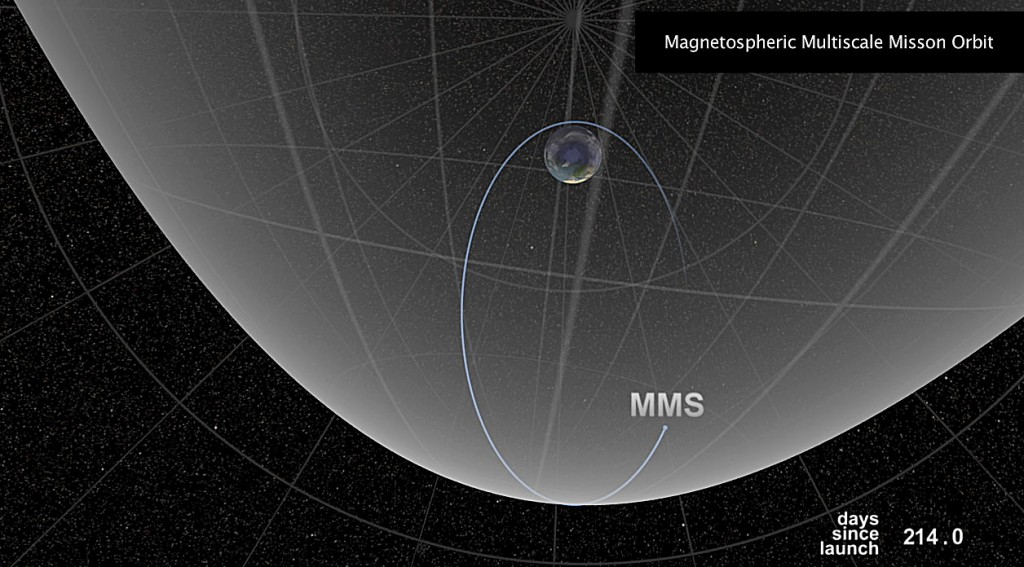
Magnetic reconnection happens when magnetic field lines break and reconfigure, releasing an explosive burst of energy. As the tetrahedron loops around Earth, it will measure in three dimensions the characteristics of magnetic reconnections.
“When it occurs in fusion reactors it’s on such a small scale that you cannot study it. The best place to study magnetic reconnection is where we are going — in Earth’s magnetosphere — to understand why it happens and how it happens. (MMS) is basically a research mission to understand this process,” said Robertson.
“This process, when it occurs, releases a tremendous amount of energy stored in the magnetic field. It is responsible for the Northern and Southern Lights. When you see those it’s because magnetic reconnection has occurred in Earth’s magnetosphere.”
“The universe is full of plasma and its full of magnetic fields, and all over the place in the universe, you have one plasma colliding with another. An example of this is the solar wind coming in and colliding with Earth’s magnetosphere. The magnetic energy in the plasma, some fraction of that magnetic energy is converted very rapidly into plasma energy. You can think of it as kind of like a magnetic explosion,” Dorelli said.
Collecting three-dimensional insights into the structure of reconnections, each satellite is fitted with 11 instruments comprised of 25 sensors. The satellites are built around a central cylindrical thrust tube, with the control system on the upper side of the deck, the instruments mounted on the underside.
“This reconnection process happens very quickly and it is a three-dimensional problem. That’s why you need four spacecraft. You need to take measurements in four different places in what’s going on,” said Robertson.
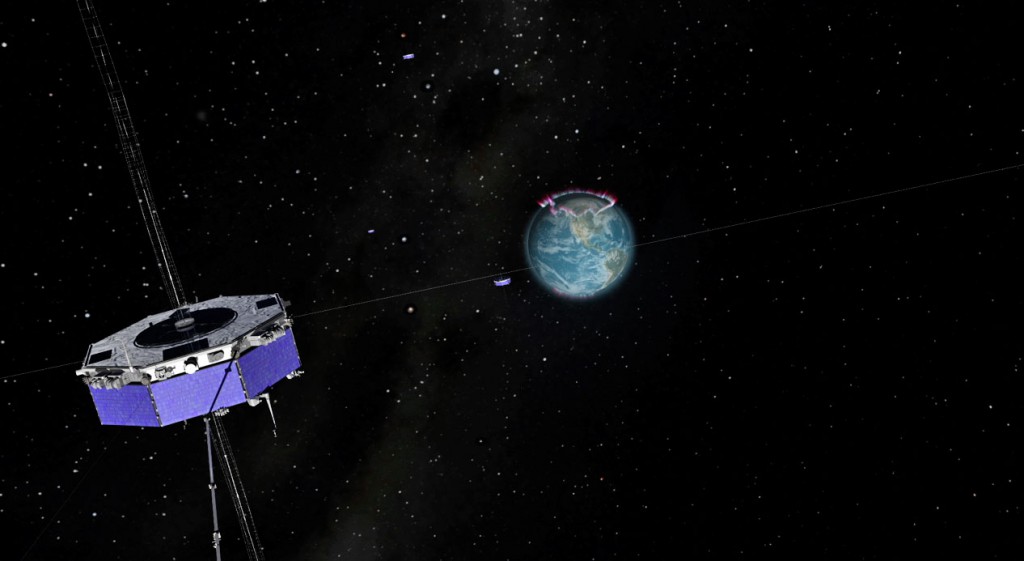
Power is generated by eight solar panels mounted on the main body of each craft. Maneuvers are accomplished via a dozen thrusters fed by four hydrazine fuel tanks. The craft spin at a rate of three revolutions per minute.
The observatories also carry extremely sensitive GPS equipment to provide absolute position information.
“Scientists want to understand how this magnetic reconnection process works, how this energy is released. It is a release of energy that is stored in the magnetic field and the energy is converted to heat and kinetic energy. It is a basic process that just isn’t understood, but it will be understood after this mission launches and takes measurements,” said Robertson.
Data-gathering will begin after a 5.5-month commissioning period. The mission is slated to last two years.
MMS will improve our understanding of magnetic reconnection by answering these fundamental questions:
* What conditions determine when reconnection is initiated and when it ceases?
* What determines the rate at which reconnection occurs?
* What is the structure of the reconnection region?
* How does the plasma become demagnetized in the reconnection region?
* What is the role of turbulence in the reconnection process?
* How does reconnection accelerate particles to high energies?
“The ideal situation is we would like the four spacecraft to kind of be surrounding this region where the explosion is happening,” said Dorelli.
“We hope that is going to allow us to improve our models so that we can put the right physics in it and actually make predictions about where and when reconnection is going to happen, and this will help us make our space weather models more predictively powerful.”
“Centuries ago as we became a seafaring species we had to understand and predict the weather. That’s crucial if you are going to navigate the globe. As the species is going to move out into our own solar system, we need to understand what drives all of that (space) weather is equally important,” said Tooley.
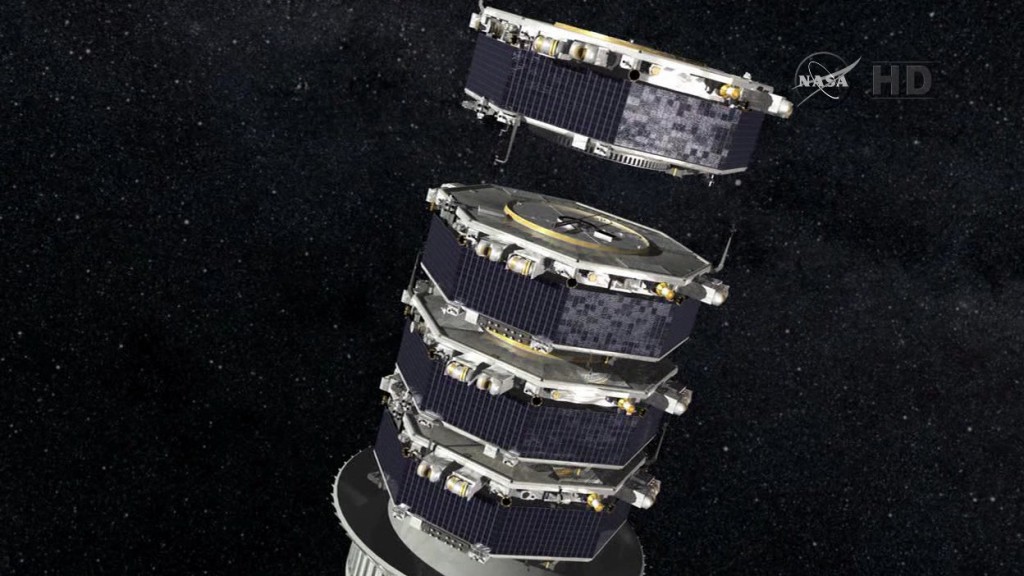
The Atlas 5, made by United Launch Alliance, will fly in its 421 variant to carry MMS with a four-meter, extended-length nose cone, two solid rocket boosters and one engine aboard the Centaur upper stage.
The configuration has flown three previous times between 2007 and 2009, launching the first two Wideband Global SATCOM spacecraft for the Air Force and the commercial ICO G1 communications satellite.
Two firings of the Centaur upper stage will be required to obtain the desired deployment orbit for MMS of 364 statute miles by 43,598 statute miles, tilted 28.77 degrees to the equator, with the first satellites separating from the rocket an hour and 32 minutes after launch and the others following every five minutes, through an hour and 47 minutes.
It will be the 53rd Atlas 5 flight, the 12th for NASA and the second Atlas launch of the year.
“The ULA team is proud to be the launch provider for the Magnetospheric Multiscale (MMS) mission for the National Aeronautics and Space Administration,” said Jim Sponnick, ULA vice president, Atlas and Delta Programs.
“MMS will study the microphysics of magnetic reconnection to improve our understanding of this fundamental energy process that limits the performance of fusion reactors on Earth and is the ultimate driver of space weather.”
See our earlier MMS coverage.
And see our Atlas archive for further information.

